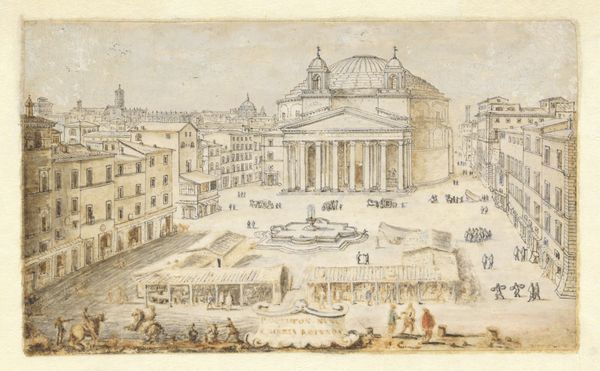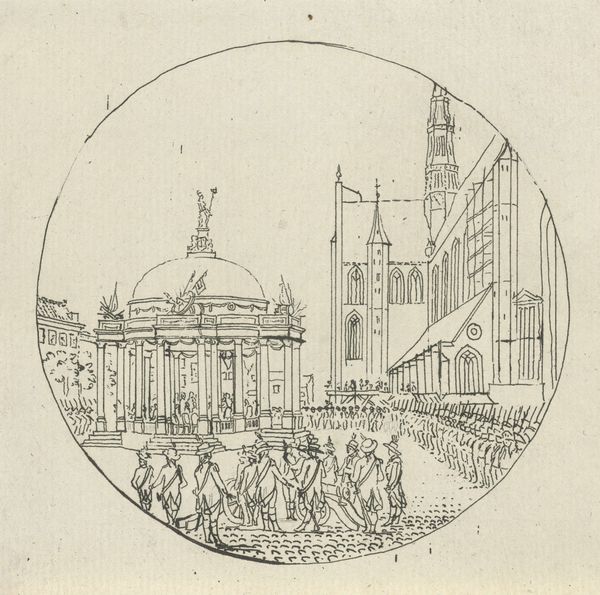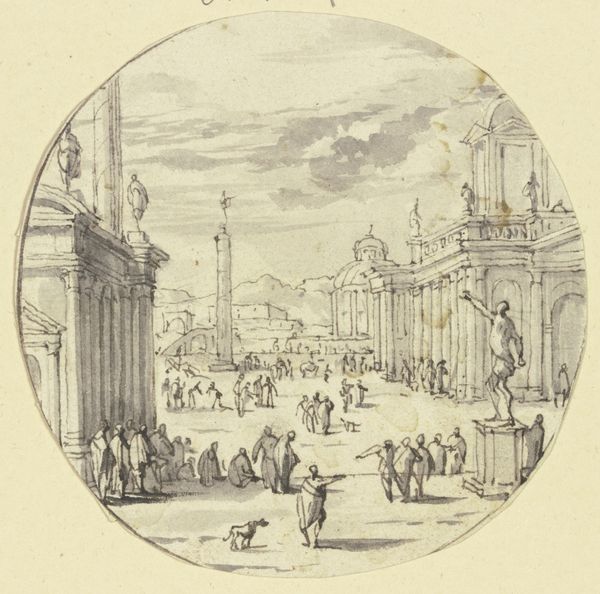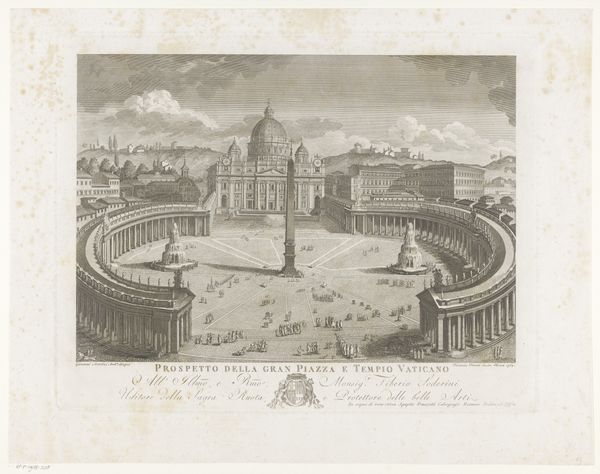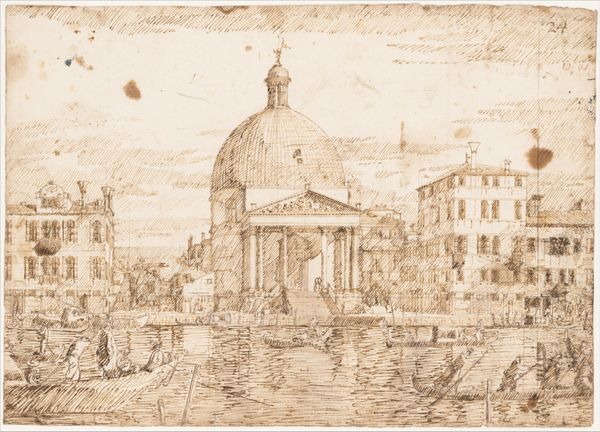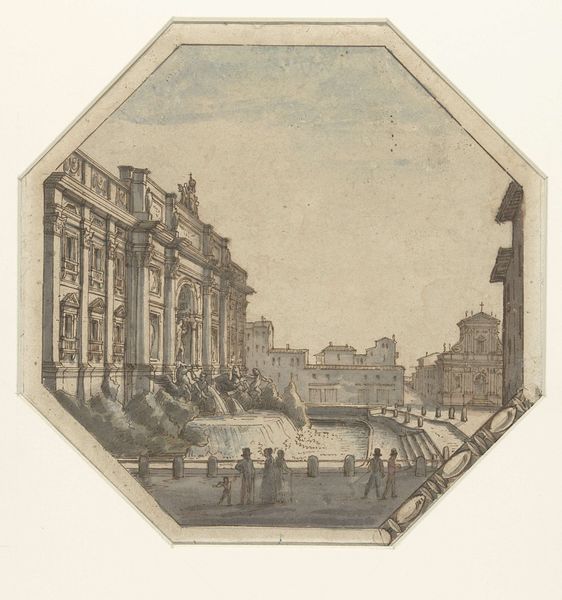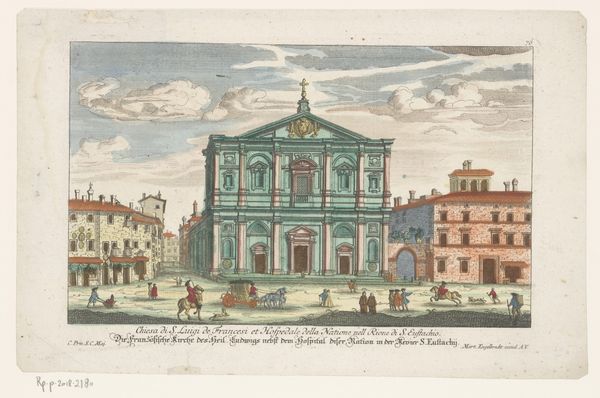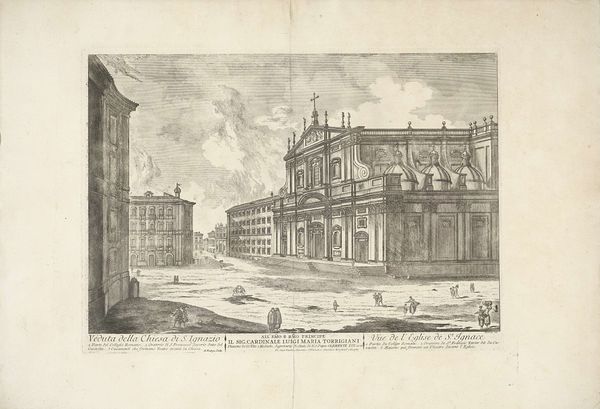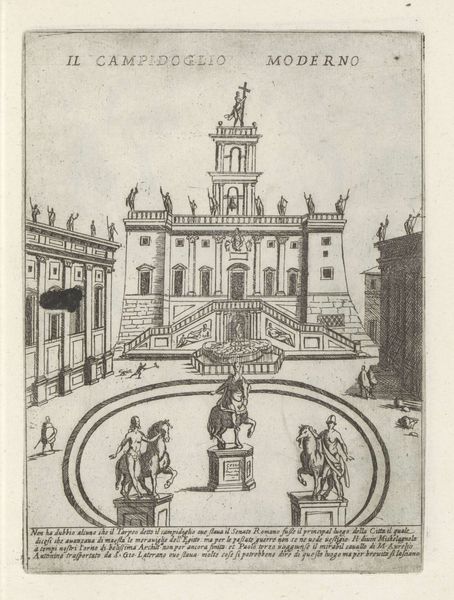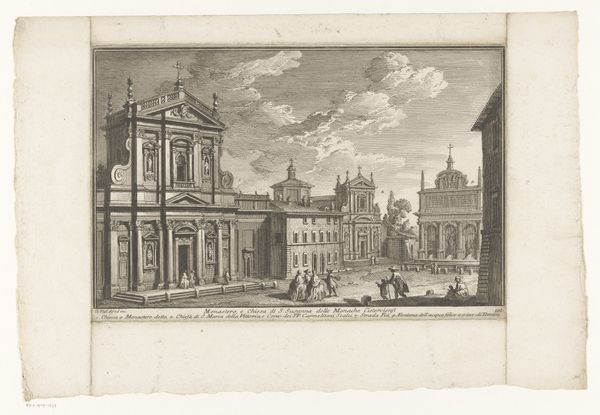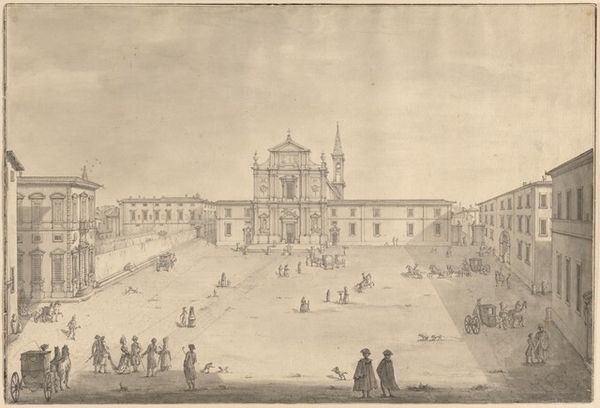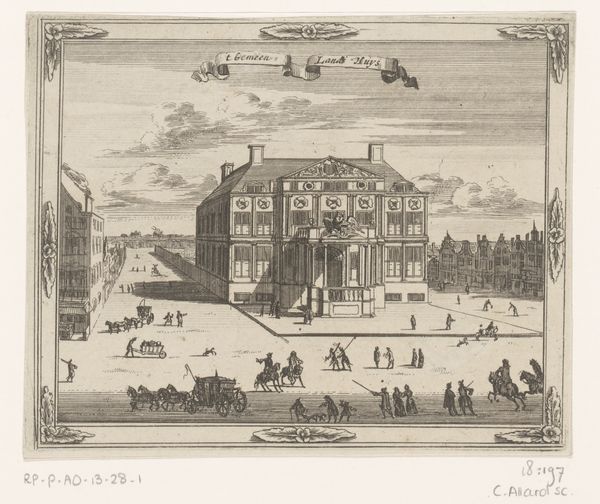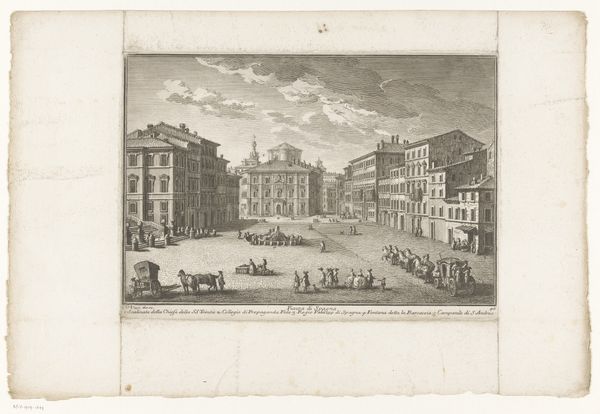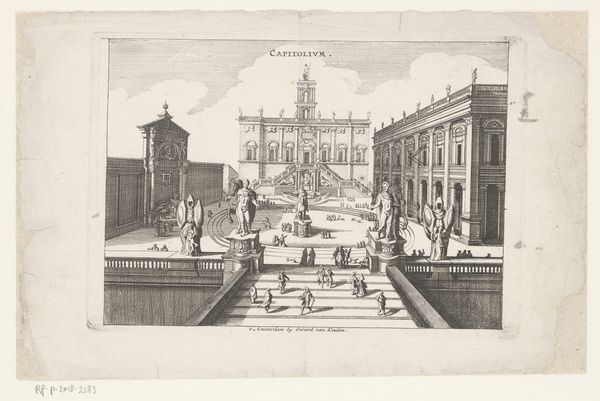
drawing, paper, ink
#
drawing
#
aged paper
#
baroque
#
mechanical pen drawing
#
old engraving style
#
sketch book
#
paper
#
personal sketchbook
#
ink
#
pen-ink sketch
#
pen and pencil
#
pen work
#
sketchbook drawing
#
cityscape
#
genre-painting
#
storyboard and sketchbook work
#
italian-renaissance
Dimensions: height 114 mm, width 114 mm
Copyright: Rijks Museum: Open Domain
Editor: Here we have "Gezicht op het Pantheon te Rome" by Lievin Cruyl, created sometime between 1650 and 1720, using ink on paper. What strikes me is the incredible detail—all those tiny figures going about their day in front of this magnificent structure. How do you interpret this work in its historical context? Curator: It’s fascinating, isn't it? Cruyl's rendering serves not just as a depiction, but as a document of the Pantheon's ongoing negotiation with the public. Consider, Rome at this time was a theatre of papal power, employing urban planning to promote the Church’s authority. How does the image negotiate the sacred and secular? Editor: I hadn't thought about it that way. It feels less like a sacred space and more like, well, a public square, almost secularized by the hustle and bustle. Curator: Exactly! It reflects a broader Baroque shift – art leaving the exclusive domains of the church and aristocracy, entering a more public sphere. The Pantheon, appropriated and repurposed through centuries, now becomes almost a backdrop for daily life. It encourages us to reflect on the power of urban spaces in shaping identity. How did it make you reflect about civic life? Editor: It makes me consider the accessibility of art and architecture. We see this iconic structure teeming with people, actively used. The work presents an ideal vision of civic integration, even now. Curator: A valuable insight. Cruyl offers not only an artistic piece, but also an insight into how public spaces communicate socio-political values across generations. It is amazing. Editor: I completely agree. I never thought I would see the power dynamic between the space of art and society, displayed in just a single artwork.
Comments
No comments
Be the first to comment and join the conversation on the ultimate creative platform.
